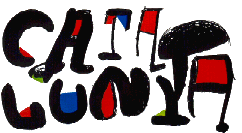|
|
GETTING TO
KNOW BARCELONA
Though Catalonia has many
other important cities of historical, economic, and artistic importance,
such as Lleida, Girona, tarragona, Vic, Manresa, Tortosa, Figueres and
Reus, its unrivalled capital for countless centuries has been Barcelona.
You can discover the ancient Barcino of 2000 years ago by exploring the
underground passageway through the Roman excavations - a remarkable technical
feat which has made it possible to leave the medieval streets and monuments
above intact.
For an opportunity to
relive the atmosphere of Medieval barcelona, try strolling through the
Gothic Quarter, around the Cathedral, the Royal Palace, and other ancient
buildings which have remained the homes of government institutions right
down to the present day: the City Hall and the Palace of the Generalitat
(the seat of the Catalan autonomous government). The Picasso Museum and
the splendid Gothic church of Santa Maria del Mar are located in the nearby
Ribera district, while the Ciutadella Park, which contains the Zoo, more
museums, and the Catalan Parliament, are only a little farther away. From
here you can walk along the sea front to La Barceloneta, a district built
in the 18th century which has preserved its old seafaring atmosphere and
now offers numerous fine seafood restaurants.
You will almost certainly
want to stroll along the Rambla, past the Liceu opera house, admiring
the stands selling birds and flowers, and the kiosks with their newspapers,
magazines, and books. Whether by day or night, the atmosphere of the Rambla
is unique, and if you linger long enough, you'll see how your fellow strollers
change from one hour to the next. And there's always a good choice of
places to stop for a drink or a meal on the Rambla itself or in the adjoining
side streets.
Barcelona underwent
a boom in the 19th century as a result of industrialization. The surrounding
towns and villages were absorbed under the trend-setting city plan drawn
up by Ildefons Cerdà which resulted in the creation of the Eixample
district, today full of boutiques and art galleries. It's well worth to
walking along the spacious Passeig de Gràcia to admire the Modernist-style
houses at the intersection with Carrer d’Aragó, and Antoni Gaudí’s
Pedrera with its undulating façade. Other works by Gaudí
which should not be missed are the vast and amazing Sagrada Familia church,
on the outskirts of the Eixample, and Güell Park.
Elegant residential
districts, such as Pedralbes with its Gothic walled monastery, lie along
the foot of the Collserola range towards the Tibidabo hill. It is possible
to reach the amusement park on the top of the hill by by taking the charming
old-fashioned Blue Tram and then the funicular. On Montjuïc, Barcelona’s
other hill which overlooks the sea, attractively landscaped gardens provide
the setting for museums, such as the Miró Foundation, the National
Museum of Art of Catalonia, the great Olymplic sports facilities -including
the old Stadium and the magnificent Palau de San Jordi-, an amusement
park and the Spanish Village, which contains reproductions of typical
buildings from all over Spain. The Old Port has been given a face-lift
and turned into one of the city's most attractive entertainment districts,
with facilities stretching beyond La Barceloneta as far as the New Port
and the Olympic Village, overshadowed by its twin skyscrapers.
At any time of the year
Barcelona is alive with numerous cultural, commercial and sports attractions:
concerts, operas, plays, exhibitions, good restaurants, international
fairs, shops, and art galleries. Barcelona, one of Europe's great cities,
is a place well worth visiting and once you get to know it, you will return
time and time again.
|

